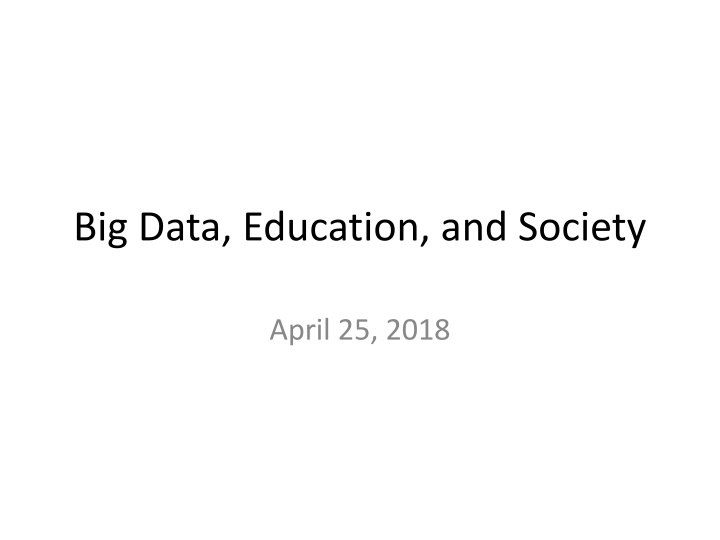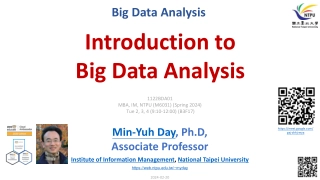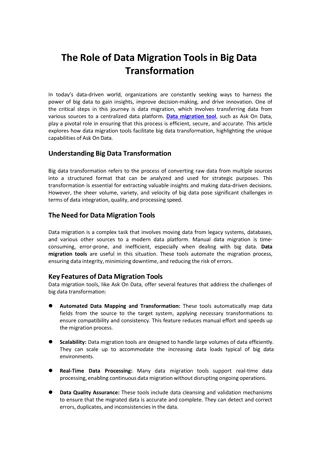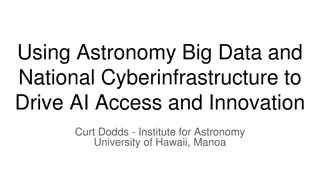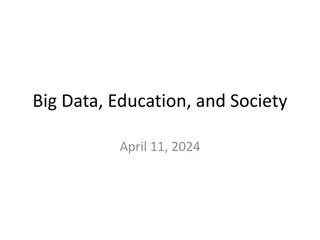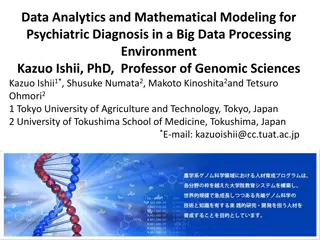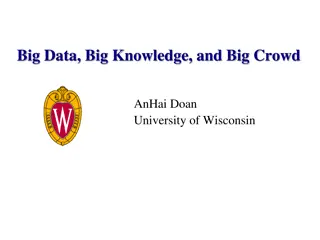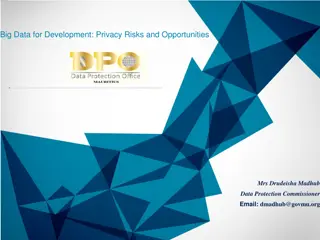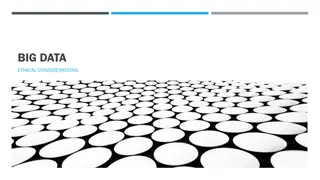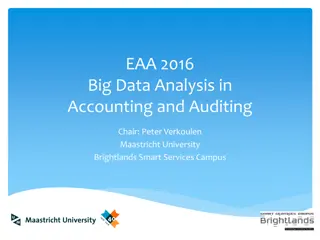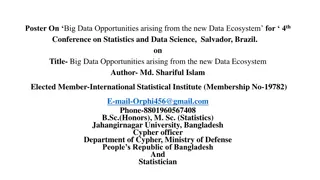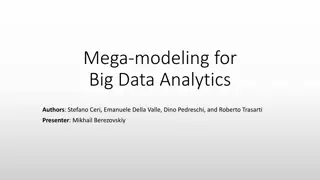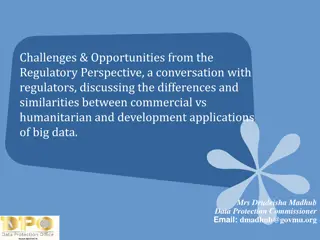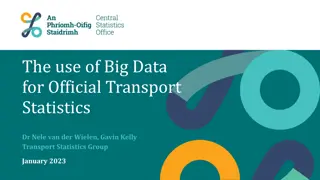Big Data in Education and Society
Algorithms in education involve value judgments regarding cost-benefit analysis, interventions based on risk thresholds, and the concepts of beneficence and non-maleficence in healthcare ethics.
Download Presentation

Please find below an Image/Link to download the presentation.
The content on the website is provided AS IS for your information and personal use only. It may not be sold, licensed, or shared on other websites without obtaining consent from the author.If you encounter any issues during the download, it is possible that the publisher has removed the file from their server.
You are allowed to download the files provided on this website for personal or commercial use, subject to the condition that they are used lawfully. All files are the property of their respective owners.
The content on the website is provided AS IS for your information and personal use only. It may not be sold, licensed, or shared on other websites without obtaining consent from the author.
E N D
Presentation Transcript
Big Data, Education, and Society April 25, 2018
Assignment 4 Any questions about assignment 4?
Algorithms express value judgments (Kraemer et al., 2011) The cost-benefit analysis on false positives and false negatives inherently involve value judgments What is the cost of wasting an instructor and student s time? What is the potential benefit to a student and the institution from a successful intervention?
Algorithms express value judgments (Kraemer et al., 2011) The selection of thresholds for algorithms impact those cost-benefit analyses Intervene when the student is at 60% risk? Intervene when the student is at 30% risk?
Beneficence (Pantilat, 2008) Beneficence is action that is done for the benefit of others. Beneficent actions can be taken to help prevent or remove harms or to simply improve the situation of others.
Beneficence (Pantilat, 2008) Physicians are expected to refrain from causing harm, but they also have an obligation to help their patients. Ethicists often distinguish between obligatory and ideal beneficence. Ideal beneficence comprises extreme acts of generosity or attempts to benefit others on all possible occasions. Physicians are not necessarily expected to live up to this broad definition of beneficence. However, the goal of medicine is to promote the welfare of patients, and physicians possess skills and knowledge that enable them to assist others. Due to the nature of the relationship between physicians and patients, doctors do have an obligation to 1) prevent and remove harms, and 2) weigh and balance possible benefits against possible risks of an action. Beneficence can also include protecting and defending the rights of others, rescuing persons who are in danger, and helping individuals with disabilities.
Non-maleficence (Pantilat, 2008) Non-maleficence means to do no harm. Physicians must refrain from providing ineffective treatments or acting with malice toward patients. This principle, however, offers little useful guidance to physicians since many beneficial therapies also have serious risks. The pertinent ethical issue is whether the benefits outweigh the burdens.
Non-maleficence (Pantilat, 2008) Physicians should not provide ineffective treatments to patients as these offer risk with no possibility of benefit and thus have a chance of harming patients. In addition, physicians must not do anything that would purposely harm patients without the action being balanced by proportional benefit. Because many medications, procedures, and interventions cause harm in addition to benefit, the principle of non-maleficence provides little concrete guidance in the care of patients. Where this principle is most helpful is when it is balanced against beneficence. In this context non-maleficence posits that the risks of treatment (harm) must be understood in light of the potential benefits. Ultimately, the patient must decide whether the potential benefits outweigh the potential harms.
Much of the discussion of learning analytics Focuses on non-maleficence
But Prinsloo & Slade Argue for the importance of beneficence (without specifically using the term)
Is it ethical for a doctor to choose not to provide a beneficial treatment? And if so, under what circumstances?
Tuskegee Experiment Is everyone here familiar with this experiment? Would anyone here be willing to describe this experiment?
Clearly The evidence in favor of learning analytics intervention is not on the scale of The evidence for penicillin curing syphilis in the 1940s
But The history of syphilis treatment actually provides a good analogy Before the discovery of penicillin in 1940 Arsphenamine (discovered 1907) and neosalvarsan (discovered 1910) cured syphilis They just had bad side effects, and were very difficult to store and administrate
33 years From the first effective treatment To the first easy-to-use lower-side-effect effective treatment But 10% of patients still have negative reactions to penicillin And 0.015% of patients have anaphylactic reactions to penicillin
How good does it have to be? How effective/affordable/feasible does a treatment have to be, before we are ethically mandated to use it?
Clearly A student dropping out of college with an average of $13,930 of debt (Brown, 2017) is in a better situation than someone with an untreated, deadly disease But it s not exactly a positive thing either
Thoughts? Comments? Where is the cut-off of harm before we are obliged to act?
Prinsloo & Slade differentiate Current legal obligations to act Moral and potential future obligations to act
Current legal obligations to act (Prinsloo & Slade, 2017) Equitable access for students with disabilities Preventing discrimination Preventing bullying Preventing suicide What else do we have legal mandates to do (as opposed to not doing) in the USA or other countries?
Questions British/South African universities tend to focus energy on students with medium risk of dropping out American K-12 institutions tend to focus energy on students with high risk of failing standardized examinations Are these the right places to allocate our efforts?
Questions Is student success primarily the student s responsibility or the institution s responsibility?
Questions How do we help students build their own success and take responsibility for it, in the long-term? Is there a danger of analytics interventions simply serving as a stop-gap or scaffold that students depend on
Questions Given the varying costs of Research & Development Smaller class sizes Smaller teaching loads Personal or phone interventions by mentors/non- instructors Creating reports for students How do we determine the right blend across students?
Upcoming office hours 5/3 DIFFERENT DAY 10am-11am
